Today, we will learn about the Theory of Relativity and Black Hole. We will learn how a black hole is not just as any other hole. It is a very highly concentrated collection of mass. But this huge amount of mass stays together in a very small space.
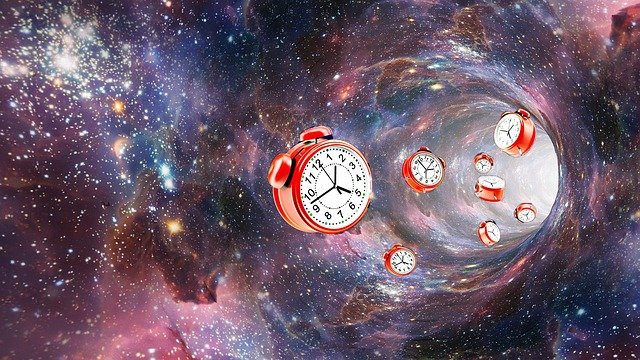
According to Einstein’s Theory of Relativity, space-time is like a trampoline. Suppose, a large body of mass stays at the center of it. The large mass causes the matter to press down. As a result, it causes a dimple. So, if you roll a marble towards it, the marble gets sucked inside.
Now, in the case of a black hole,
- The length of the hole extends up to nothingness.
- You can’t see what’s on the other side.
- Even if anyone or anything attempts to go near it, it gets sucked in like the marble. But in this case, you just can’t put your hand in and get it back. Nothing escapes it, not even the highest speed light!
This black hole is one of the eternal wonders of space. Light waves lose their way to this space monster. The theory of relativity and black hole are connected to eachother in a very interesting way. Let us learn in-depth about it today.
Things you will know after reading this article,
- What do you mean by Black Hole?
- How is a Black Hole born?
- The history of Black Hole
- The size of the Black Hole
- The Black Hole information paradox
What do you mean by Black Hole?
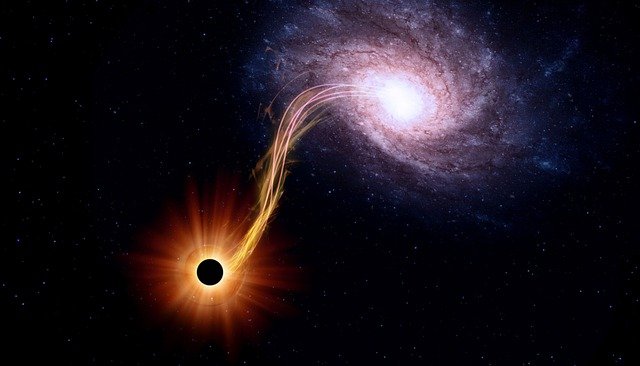
In the year 1915, Albert Einstein formulated the General Theory of Relativity. The most important prediction of this theory is the presence of Black Holes. Black hole pulls any objects that come close to it such as planets, comets, or spacecraft. Due to the huge mass concentrated in a small area, it appears like a hole at that place. Physicist John Wheeler coined the term ‘Black Hole’.
Black holes are simply stars that attract anything that comes their way.
Characteristics of these stars:
- Unusual shapes.
- Unusual Masses and densities.
- The emission of light from all these stars cannot come out.
- When a star’s lifespan is over, at that moment its gravitational force is so strong that light cannot escape.
- A black hole exists only when a star’s lifespan ends.
How was the Black Hole born?
The history of the birth of the black hole is much like a poem. The death of a star results in the birth of a black hole. This can surely fit into one of Shakespeare’s tragedies if he wrote stories about space. According to scientists, the birth of the smallest black hole was at the time of the initiation of this universe. The process of forming a black hole:
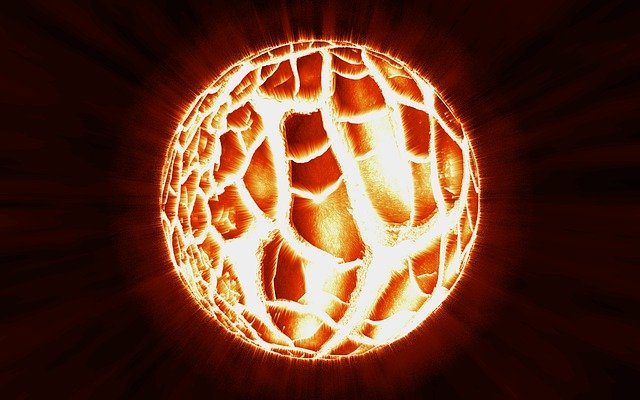
- Some stars are 8 times heavier than the sun. These end their lives suddenly.
- When they run out of hydrogen fuel, they swell. This swelling causes the birth of a red supergiant.
- They still tend to keep on living. As a result, they try to survive by burning other fuels. This lasts them for a few million years.
- At last, they blow up into a huge supernova explosion. When a star runs out of fuel, it dies. As long as its internal hydrogen gas remains, the nuclear reaction inside it continues.
When hydrogen burns out, its central core begins to shrink. Thus a star dies.
Black holes have strong gravitational fields. There is a limit around every black hole. Once you enter it you can no longer exit it. In this way, the black hole has survived as a marvel of space. It has forever been deemed as a space monster.
History of Black Hole
History from start to finish:
- A black hole is a massive object. Its gravitational pull cannot escape even a light wave. This was a proposal by Geologist John Michell.
- In 1898, mathematician Pierre Simon Laplace gave the same ideology in the first and second editions of his book, Exposition du système du Monde.
- In 1915, Einstein, with his “General Relativity Theory”, came up with the idea that black holes could exist. According to the General Theory of Relativity,
“A black hole is a special place in space from which nothing, not even light, can come out.”
- In 1994, the scientific community got proof by the astronauts that there is a black hole. This is not science fiction.
- The German scientist Karl Schwarzschild showed in 1918 that any star could turn into a black hole.
- Hawking Radiation is a discovery by Stephen Hawking in 1974. This phenomenon shows that black holes are gradually evaporating.
How Big is this Black Hole?
Black holes can be small or large. According to experts, the smallest black hole can be the size of an atom. Black holes can be very small. But the mass of each of them can be equal to a huge mountain. Another type of black hole goes by the name “stellar”. Its mass may be 20 times greater than the mass of our Sun.
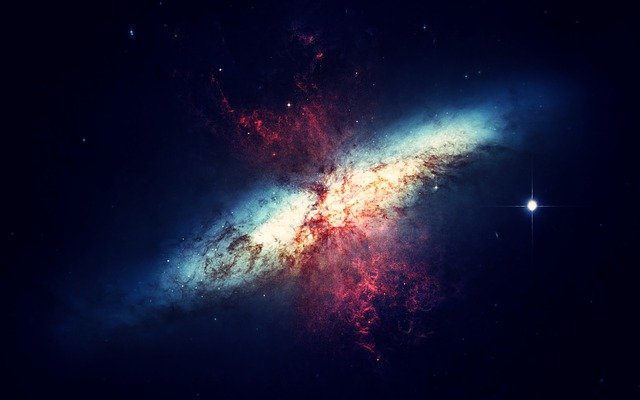
There are many heavier stars in Earth’s galaxy. The Earth’s galaxy is the “Milkyway”. The largest black holes go by the name “supermassive”. The division of the black hole considers its mass, charge, and angular momentum. There are four types of black holes based on mass. E.g.
- Super Massive Black Hole
- Intermediate Black Hole
- Micro Black Hole
- Stellar Black Hole
If a Black Hole is Black, how do Scientists see it?
In general, it is almost impossible to see a black hole. But scientists can see the effect on the surrounding stars and gases by it. Researchers can study the stars that fly or rotate around a black hole.
Black holes are called space monsters. When a black hole and star come very close to each other, there is the generation of a lot of high-power light. Scientists use satellites and some specially equipped telescopes to observe this high power of light.
What we know about black holes for so long is wrong?
“Nothing can come out of a black hole, not even light.”
~This is the acknowledgment of classical physics.

However, this principle is no longer accepted by researchers. The first to reject it is the British physicist Professor Stephen Hawking. Physicist Stephen Hawking put forth his explanation about this black hole in various ways in his book, “A Brief History of Time”. However, the amount of recovery of information so far is unimaginable. Therefore, our idea of black holes is not wrong. It exists!
Can a Black Hole cause disaster or destruction on Earth?
Reasons why the Earth is safe and will be safe:
- A black hole does not travel so close to space at all. As a result, it can not prey on any star, moon, or planet.
- The earth will never fall into a Black Hole. Because no black hole is so close to the solar system.
- Only if there is a black hole of the same mass as the Sun, Earth would be in danger. But, there is no possibility whatsoever.
- The mass of some black holes may be equal to that of the sun. But even then, the Earth and other planets will continue to revolve around that black hole.
So, it turns out that the black hole has not brought any threat to us yet. Again, it will not do so soon.
The famous female astronomer Hlavacek- Larrondo said,
“I think we’re getting a bigger and stronger black hole than we expected, and that’s interesting enough.”
The Black Hole Information Paradox
“In space, no one can hear you scream; and in a black hole, no one can see you disappear.”
– Stephen Hawking, “Black Holes: The Reith Lectures”
To understand this paradox, first, we need to define what we mean by “information.”
Concept of Information and Quantum Information
Typically, the information we talk about is visible to the naked eye. But physicists are more concerned with quantum information. The total amount of quantum information in the Universe must be conserved. Even if you destroy an object beyond recognition, its quantum information is never permanently deleted. Theoretically, knowledge of quantum information would allow us to recreate the object from its particle components.
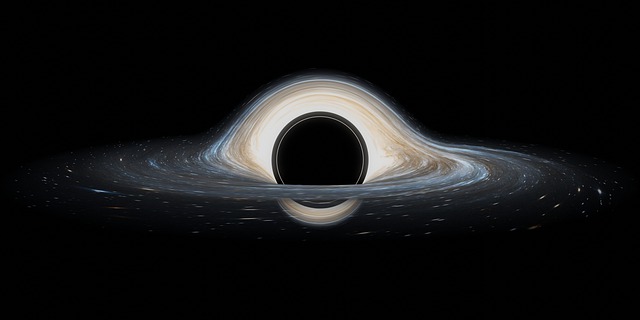
Conservation of information isn’t just an arbitrary rule, but a mathematical necessity.
Modern science is built upon it. But around black holes, those foundations get shaken.
What happens when any information goes through the black hole?
This information paradox revolves around this question. Some theories suggest that information doesn’t even make it inside the black hole at all. In 1974, Hawking Radiation a Discovery by Stephen Hawking showed that black holes are gradually evaporating.
But fortunately, in science, every paradox is an opportunity for discoveries. Researchers are investigating a broad range of possible solutions to the Information Paradox. Some suggest that the paradox is just a misunderstanding of how general relativity and quantum field theory interact.
Conclusion
I hope you enjoyed my ultimate guide to the Theory of Relativity and Black Hole.
Now I’d like to hear from you: which information about the Theory of Relativity and Black Hole did you like the most? Did you know any of these earlier?
Either way, let me know by leaving a quick comment below.
Read More Exciting Articles



